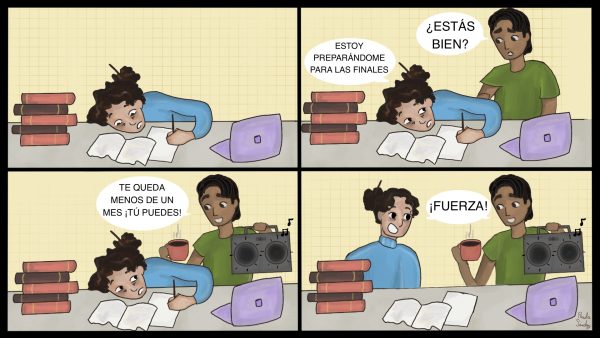‘Hunger’ satiates craving for Irish history
April 26, 2009
When President Bill Clinton made Northern Ireland his pet project, he was certainly making a timely choice. Many of history’s more clear-cut atrocities had passed, but the morally confusing, decades-long bloodshed between the Provisional Irish Republican Army (IRA), Protestant Paramilitaries and the British Army was in danger of serious escalation in 1998 after repeated violations of a 1994 ceasefire agreement. And while conflict in Northern Ireland has died down some as of late, writer/director Steve McQueen’s film Hunger has a timeless quality to it. In the same way that Clinton might have looked ahead to the legacy he would leave behind, (a legacy besmirched by another 1998 event), McQueen seeks to encapsulate a moment of history and show its relevance beyond dates past.
The film tells the story of the 1981 hunger strikes and their leader Bobby Sands, played by Michael Fassbender. Sands, a once active volunteer in the IRA, was convicted by England and held in the Maze prison where he was elected to parliament and eventually died. Before the audience ever sees Sands, we are introduced to the ongoing struggles of IRA prisoners through a new arrival on the cell block, a “non-conforming prisoner.” For years, the IRA held at the Maze prison engaged in any and every possible means of resistance, from refusing to wear prison uniforms to refusing to deposit waste, smearing it on the walls instead. The conditions for these H-block prisoners were hellish, but much of that was their own imposition. If they weren’t covering their walls in excrement and going around naked or in a towel, they were forcibly resisting every activity, justifying the violent reactions of the prison guards.
But if the prisoners were merely fighting for better treatment they would have been cowed long before the hunger strikes. Instead, they fought for something illusory. They had physical demands-the ability to wear civilian clothing, associate more freely, etc.-but the implications of these demands were all the more important. IRA convicts wanted to be granted special political status, and not be seen or treated as criminals. To this, Margaret Thatcher famously responded, “Crime, is crime, is crime.”
Prisoners and guards did not interact except when strictly necessary. The guards followed their routines while the prisoners clung to their protest. Any meeting between the two was intense and emotional. They prepare as if for war, the prisoners naked in their cells, staring down the cell doors and the guard out in formation with billy clubs in hand. Our introduction to Bobby Sands comes when he is dragged kicking and screaming from his cell, beaten mercilessly and held down while another guard hacks off all his hair. There is a scene of potent metaphor when Sands lies unconscious in a bloody bathtub while a guard soaks his hand in the sink after swinging at Sands and connecting with the concrete wall.
The majority of the film is silent or without real dialogue. There are some sparse words exchanged, but the vast majority of verbal communication is limited to a single scene between Sands and Father Moran where Sands tells him of his plans for a new hunger strike after what he viewed as a failed attempt the year before. More than two full cigarettes’ time is spent on the first shot of this scene as the two engage in small talk and relate to each other as Irishmen. They debate the morality of a hunger strike where Sands’ idea of victory involves his own death. This is the meat of the movie. It is not some expository history lesson for the uninformed audience, but an exploration of the machinations and motives of one polarizing individual. The majority of this film is intensely pensive, drawing the audience into the psychology of the prisoner.
There is an explosion of life in this scene where Sands actually speaks of the Ireland he loves, the very reason for which he endures all the hardships at the Maze prison. A tour de force for acting, this long take with quick, witty dialogue is mesmerizing on screen. But then one gets the sense that Fassbender had the will to get the role right. Himself a distant relative of Michael Collins, the once leader of the IRA, Fassbender has acted similar revolutionary roles before.
The end of the film is already painted on the walls of history, but its execution is refreshing. There is no shortage of uncomfortable imagery showing the decline and death of a man.







